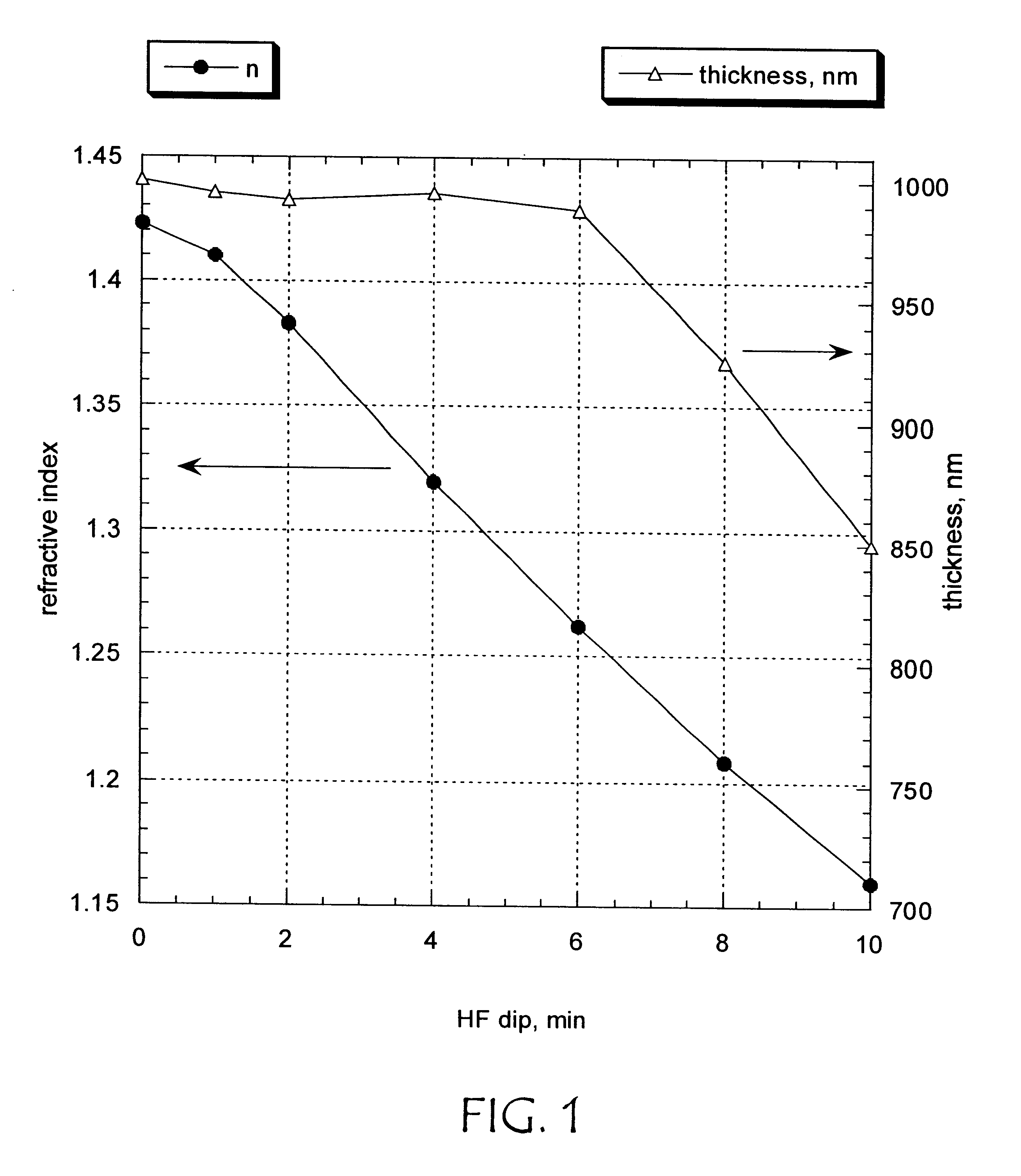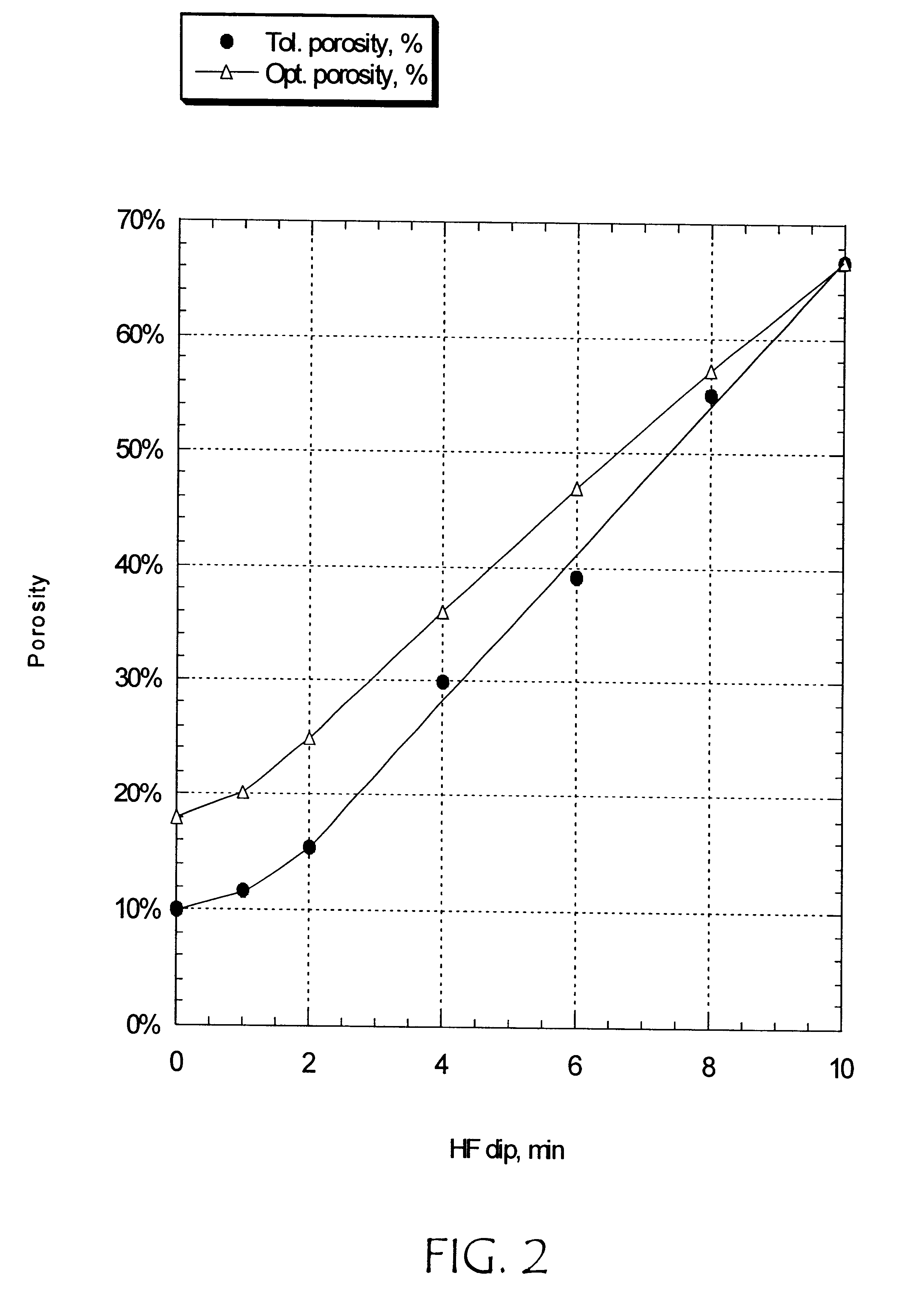Method to produce a porous oxygen-silicon layer
a technology of oxygensilicon and oxygen, applied in the direction of semiconductor/solid-state device manufacturing, basic electric elements, electric devices, etc., can solve the problems of reducing the noise margin used, limiting the achievable speed, and complex methods described in the state of the ar
- Summary
- Abstract
- Description
- Claims
- Application Information
AI Technical Summary
Benefits of technology
Problems solved by technology
Method used
Image
Examples
Embodiment Construction
The present invention discloses a way to prepare ultra low-k dielectric films with higher chemical stability compared to oxide and silsesquioxane-based porous materials.
The SiOCH low-k films were deposited by a plasma enhanced oxidation of (CH.sub.3)SiH by N.sub.2 O at 400.degree. C. in the Applied Material P5000 chemical vapor deposition tool. The as-deposited SiOCH film had a dielectric constant close to 2.7 and a refractive index of 1.41-1.43.
These films were etched in a diluted HF (2%) solution for various times (up to 10 minutes). Samples were etched at room temperature in a relatively large volume of solution (500 ml per 1 cm.sup.2 sample) and dried by compressed nitrogen.
After the etching, the refractive index and the thickness of the films were measured by ellipsometry (Sentech automatic single wavelength SE-401 ellipsometer).
The chemical composition of the SiOCH films was analyzed by FTIR and X-ray photoelectron spectroscopy (XPS). The FTIR spectra were recorded on a Bio-Ra...
PUM
| Property | Measurement | Unit |
|---|---|---|
| dielectric constant | aaaaa | aaaaa |
| dielectric constant | aaaaa | aaaaa |
| thickness | aaaaa | aaaaa |
Abstract
Description
Claims
Application Information
 Login to View More
Login to View More - R&D
- Intellectual Property
- Life Sciences
- Materials
- Tech Scout
- Unparalleled Data Quality
- Higher Quality Content
- 60% Fewer Hallucinations
Browse by: Latest US Patents, China's latest patents, Technical Efficacy Thesaurus, Application Domain, Technology Topic, Popular Technical Reports.
© 2025 PatSnap. All rights reserved.Legal|Privacy policy|Modern Slavery Act Transparency Statement|Sitemap|About US| Contact US: help@patsnap.com



